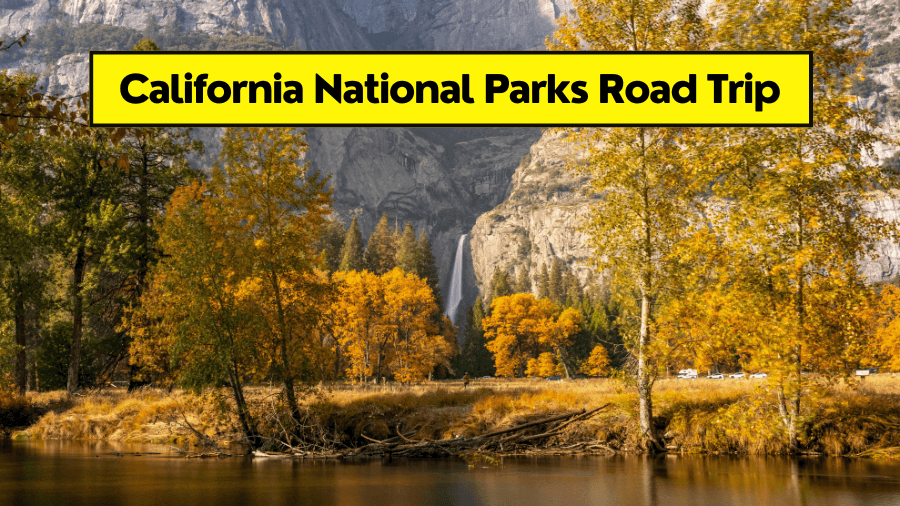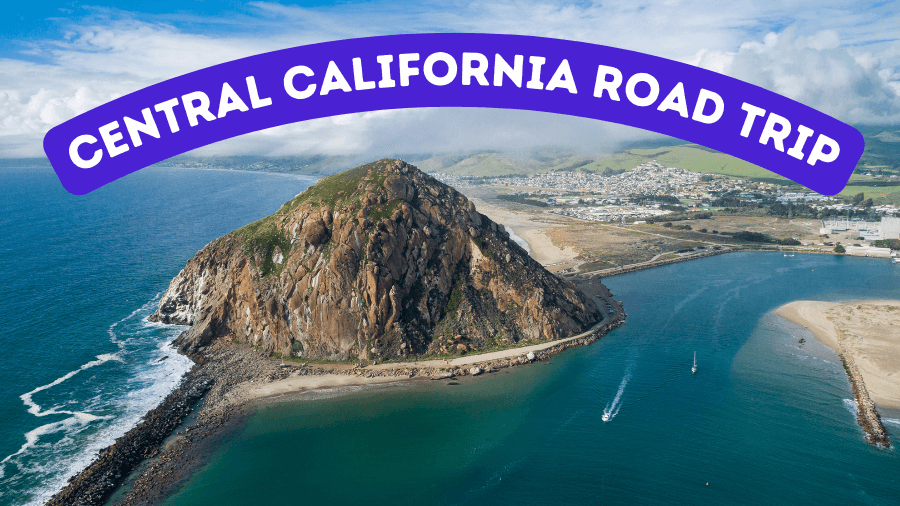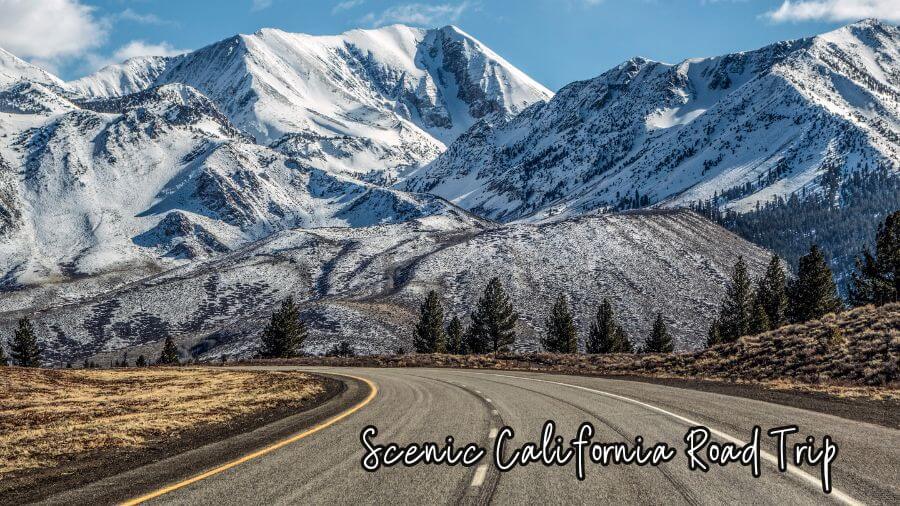California isn’t messing around when it comes to national parks.
We’re talking towering trees that make you feel like an ant, deserts straight out of a sci-fi movie and even a place where the ground literally bubbles and steams like a giant outdoor science experiment.

This road trip hits them all—from the hottest, lowest, and driest spot in North America to an island so wild you can only get there by boat.
Grab your hiking boots and load up on snacks, because this is the ultimate California national parks adventure, and you’re going to want to see every inch of it.
1. Redwood National and State Parks

Redwood National and State Parks, up on California’s wild northern coast, are home to the tallest trees on Earth—some soaring over 350 feet, like the famous Hyperion.
Walking through these ancient forests feels like stepping into a movie, which makes sense because scenes from Star Wars: Return of the Jedi were filmed in redwood forests.
Besides the jaw-dropping trees, you’ll find rugged coastline, herds of Roosevelt elk, and even a drive-through tree because California loves a good roadside attraction.
If you’re up for an adventure, hike the Fern Canyon trail, where lush, 50-foot walls of ferns surround you in a prehistoric wonderland so cool it was featured in Jurassic Park 2.
From here, drive south on US-101—typically about five hours—to reach the bubbling geothermal wonders of Lassen Volcanic National Park.
2. Lassen Volcanic National Park

Lassen Volcanic National Park is like Yellowstone’s underrated little cousin—bubbling mud pots, steaming fumaroles, and even a volcano you can hike.
The star of the show is Lassen Peak, one of the largest plug dome volcanoes in the world, and if you’re up for the climb, the summit serves up insane panoramic views.
Down below, Bumpass Hell—yes, that’s its real name—feels like another planet with its boiling springs and sulfur steam vents that smell exactly like rotten eggs but are totally worth it.
And if you think volcanoes mean nothing but lava and rock, the park also has crystal-clear alpine lakes, wildflower-covered meadows, and even snowy slopes for backcountry skiing in the winter.
Next, head southwest to Redding (about 1 hour), then continue south to Yosemite (approximately 5 to 6 hours) for the next leg of adventure.
3. Yosemite National Park

Yosemite National Park is the definition of jaw-dropping, with massive granite cliffs, thundering waterfalls, and scenery so iconic it’s basically the face of the National Park system.
El Capitan and Half Dome tower over Yosemite Valley, daring rock climbers to test their limits while everyone else just stares up in total awe.
Springtime means waterfalls at full blast—Bridalveil, Vernal, and the legendary Yosemite Falls—but if you visit in February, you might catch the Firefall, when the sunset makes Horsetail Fall glow like molten lava.
And let’s not forget the Giant Sequoias at Mariposa Grove, because apparently California just can’t help but grow the biggest trees on Earth.
When you’re ready for more epic landscapes, head south—Kings Canyon National Park is just a 3-hour drive away.
4. Kings Canyon National Park

Kings Canyon National Park doesn’t get the same hype as Yosemite, but it absolutely should—this place has one of the deepest canyons in North America, towering sequoias, and way fewer crowds.
The star attraction is General Grant, a giant sequoia so massive it was named the Nation’s Christmas Tree and has a trunk wide enough to fit a small house.
Beyond the trees, Kings Canyon itself is a stunner, with glacier-carved granite walls, roaring waterfalls, and the kind of scenic drives that make you pull over every five minutes just to soak it all in.
Just keep in mind, Mist Falls usually closes during the winter and reopens from May through October, so make sure to plan your visit around that!
Keep the adventure going—Sequoia National Park is about a 1.5 to 2-hour driveway.
5. Sequoia National Park

Sequoia National Park is where trees hit beast mode, home to the biggest tree on Earth by volume—the legendary General Sherman, standing 274.9 feet tall and weighing approximately 4.19 million pounds.
Walking through the Giant Forest feels like stepping into a land of giants, with massive sequoias towering overhead and trails that make you feel absolutely tiny in the best way possible.
For epic views, climb the 350 steps to the top of Moro Rock, a granite dome that serves up panoramic Sierra Nevada scenery (and a serious leg workout).
And if you’re feeling extra adventurous, explore Crystal Cave, a hidden marble cavern filled with shimmering stalactites and underground streams.
Just a quick reminder that the cave usually closes over winter and reopens in the summer, and it can only be visited by a guided tour.
After taking in these towering wonders, continue the adventure with a drive of around 4.5 hours west to Pinnacles National Park.
6. Pinnacles National Park

Pinnacles National Park is California’s secret volcanic wonderland, packed with towering rock spires, hidden caves, and some of the best condor-spotting in the country.
The park’s rugged landscape was formed by an ancient volcano that got ripped apart by the San Andreas Fault, leaving behind dramatic cliffs and crazy-cool rock formations perfect for hiking and rock climbing.
If you’re up for a challenge, the High Peaks Trail takes you up narrow rock staircases carved right into the cliffs, while the Bear Gulch and Balconies Caves let you scramble through pitch-black tunnels (headlamp required!).
And keep your eyes on the sky—this is one of the best places to see California condors, the massive, almost-extinct birds that look like something straight out of Jurassic Park.
From here, drive south for about 4.5 hours to reach Channel Islands National Park—just don’t forget you’ll need a boat to get to the islands!
7. Channel Islands National Park

Channel Islands National Park is California’s version of the Galápagos—five wild, undeveloped islands packed with sea caves, epic cliffs, and animals you won’t find anywhere else.
Getting there requires a boat ride, but once you arrive, it’s all about hiking scenic trails, spotting adorable island foxes, and snorkeling in crystal-clear waters teeming with bright orange garibaldi fish.
For an unforgettable adventure, kayak through the famous Painted Cave on Santa Cruz Island, one of the largest sea caves in the world.
And with zero hotels, restaurants, or cars on the islands, this is pure nature—so pack some snacks and bring a sense of adventure.
When you’re ready to trade ocean views for desert landscapes, drive east for about 3.5 to 4 hours to Joshua Tree.
8. Joshua Tree National Park

Joshua Tree National Park is where the desert gets weird—in the best way possible—with twisted Joshua trees, giant boulder piles, and some of the darkest night skies in California.
By day, you can climb massive rock formations, hike through the cholla cactus garden (just don’t touch them—they will win), or find the secret heart-shaped rock hidden along the Arch Rock Nature Trail.
As the sun sets, the whole park turns golden, and when night falls, the Milky Way lights up the sky like a cosmic fireworks show, making this one of the best stargazing spots on the planet.
And if the landscapes feel a little otherworldly, that’s because they basically are—U2 named an album after it and the Joshua trees themselves look like something straight out of a Dr. Seuss book.
If you’re up for one last adventure, Death Valley is about a 5.5 to 6-hour drive north.
9. Death Valley National Park

Death Valley National Park is the land of extremes—home to the hottest temperature ever recorded on Earth, the lowest point in North America, and some of the most mind-blowing desert landscapes you’ll ever see.
Start at Badwater Basin, a vast salt flat sitting 282 feet below sea level, where the ground looks like it’s covered in snow but is actually pure salt baked by the relentless sun.
For views that will make you feel like you’re on another planet, head to Zabriskie Point at sunrise or explore the rolling sand dunes of Mesquite Flat.
And if you visit in the cooler months, don’t miss the trek to Racetrack Playa, where mysterious “sailing stones” somehow move across the dry lakebed on their own.
Related Posts



